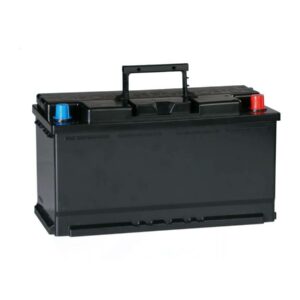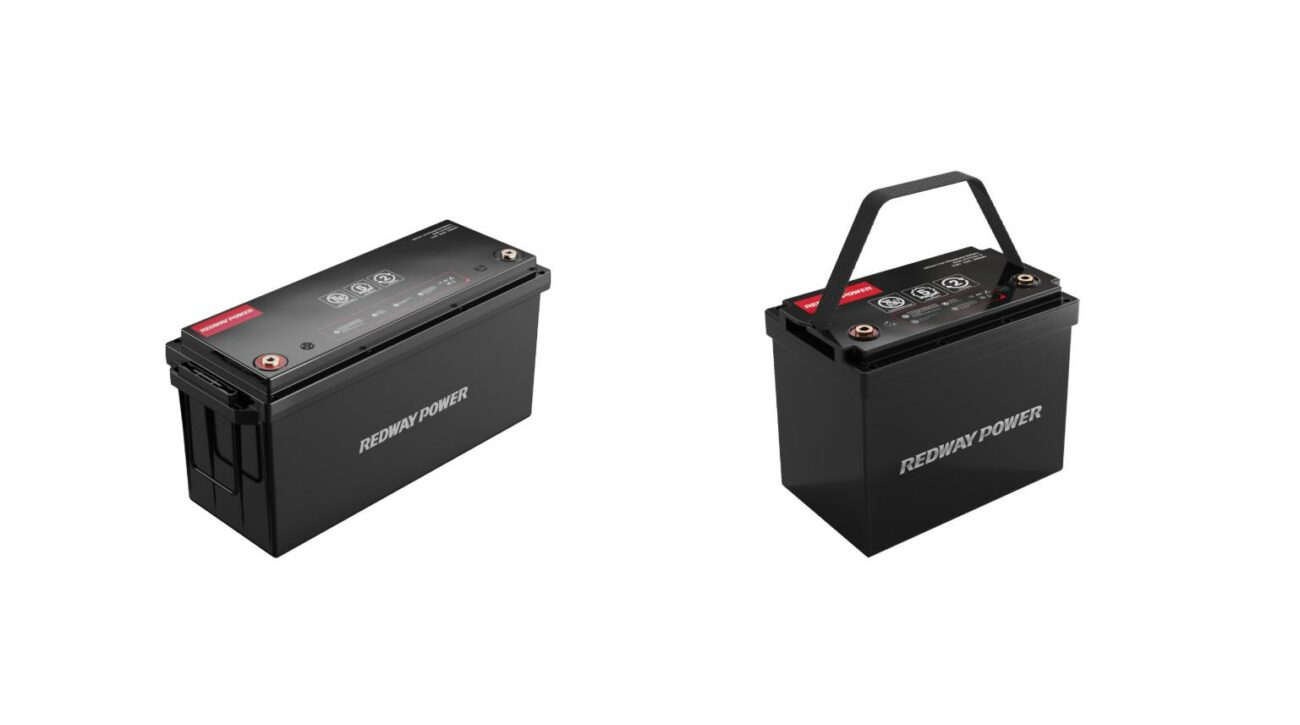Which Battery Is Better: LiFePO4 or Lead-Acid for Starters?
LiFePO4 batteries outperform traditional lead-acid starter batteries in lifespan, weight, and efficiency, offering 4-10x longer cycle life, 50-70% lighter weight, and faster charging. However, lead-acid batteries remain cheaper upfront. LiFePO4 excels in extreme temperatures and requires zero maintenance, making them ideal for high-performance vehicles and off-grid applications despite higher initial costs.
Why are LiFePO4 car starter batteries more efficient than lead-acid?
How Do Lifespans Compare Between LiFePO4 and Lead-Acid Batteries?
LiFePO4 batteries last 2,000-5,000 cycles vs. 300-500 cycles for lead-acid. Their lithium-iron-phosphate chemistry resists degradation, maintaining 80% capacity after 2,000 cycles. Lead-acid batteries suffer from sulfation, reducing lifespan by 30% in high-drain applications. For starters, LiFePO4 typically lasts 8-10 years vs. 3-5 years for lead-acid.
This longevity advantage becomes particularly evident in frequent-start applications like delivery vehicles or hybrid engines. Unlike lead-acid batteries that degrade with each deep discharge, LiFePO4 chemistry allows full depth-of-discharge without capacity loss. A 2025 fleet study by Frost & Sullivan showed taxi operators reduced battery replacements from 18 months (lead-acid) to 7 years (LiFePO4). The crystalline structure of lithium iron phosphate also prevents the “memory effect” that plagues some battery types, ensuring consistent performance throughout its lifespan. For solar storage applications where daily cycling occurs, this translates to 6-8 years of maintenance-free operation compared to 1.5-2 years for flooded lead-acid alternatives.

What Are the Weight Differences Between These Battery Types?
LiFePO4 batteries weigh 50-70% less than lead-acid equivalents. A 100Ah LiFePO4 battery averages 12-15kg, while lead-acid versions weigh 25-30kg. Reduced weight improves vehicle fuel efficiency by 2-3% and reduces engine strain. Marine/RV users benefit from weight savings in load-sensitive applications.
How long do LiFePO4 car starter batteries last?
Why Do Lead-Acid Batteries Have Lower Upfront Costs?
Lead-acid production costs 60-70% less due to mature manufacturing processes and abundant raw materials (lead, sulfuric acid). LiFePO4 requires rare lithium and cobalt, with complex battery management systems. However, total ownership costs favor LiFePO4 when factoring lifespan and maintenance savings.
Which Battery Performs Better in Extreme Temperatures?
LiFePO4 operates at -20°C to 60°C vs. lead-acid’s -10°C to 40°C range. In sub-zero conditions, LiFePO4 maintains 85% capacity vs. 50% for lead-acid. High heat (50°C+) reduces LiFePO4 lifespan by 15% vs. 40% degradation in lead-acid. Built-in thermal management in LiFePO4 prevents freezing/overheating damage.
Does Maintenance Differ Between These Battery Technologies?
LiFePO4 requires zero maintenance vs. monthly checks for lead-acid. Lead-acid needs water topping, terminal cleaning, and equalization charges to prevent sulfation. LiFePO4’s sealed design and stable chemistry eliminate corrosion risks. Deep discharges below 50% damage lead-acid but don’t affect LiFePO4 (100% depth-of-discharge capable).
How Do Charging Speeds Compare?
LiFePO4 charges 3x faster, accepting 1C charge rates (100Ah battery charges in 1 hour) vs. lead-acid’s 0.2C (5+ hours). Fast charging reduces alternator strain in vehicles. LiFePO4 maintains 95% charge efficiency vs. 70-85% in lead-acid. Partial charging doesn’t cause memory effect in either type.
What Are the Environmental Impacts of Each Battery Type?
LiFePO4 has 90% recyclability rate vs. 99% for lead-acid but uses non-toxic materials. Lead-acid production creates sulfur dioxide emissions and lead contamination risks. A 2023 study showed LiFePO4 has 40% lower carbon footprint over lifespan. Both require proper disposal – improper lead-acid recycling causes 65% of global lead pollution.
While lead-acid batteries have higher official recycling rates, the environmental costs differ significantly. Lithium iron phosphate batteries contain no heavy metals, reducing soil contamination risks if improperly disposed. New closed-loop recycling systems recover 98% of lithium content through hydrometallurgical processes. In contrast, lead smelting releases particulate matter containing arsenic and sulfur compounds. The EPA estimates 2.7kg of CO2 equivalent per Ah for lead-acid production versus 1.8kg for LiFePO4. Emerging regulations like the EU Battery Directive now mandate 70% material recovery for lithium batteries by 2030, driving cleaner production methods.
| Parameter | LiFePO4 | Lead-Acid |
|---|---|---|
| Cycle Life | 2,000-5,000 | 300-500 |
| Weight (100Ah) | 12-15kg | 25-30kg |
| Recycling Rate | 90% | 99% |
Which Battery Is Safer for Vehicle Applications?
LiFePO4’s stable chemistry prevents thermal runaway, even when punctured. Lead-acid risks hydrogen gas explosions during overcharging. AGM lead-acid reduces but doesn’t eliminate venting risks. LiFePO4 batteries include pressure relief valves and flame-retardant casings. Crash tests show LiFePO4 maintains integrity at 15G impacts vs. lead-acid case ruptures at 8G.
Are LiFePO4 Batteries Compatible With Existing Vehicle Systems?
Modern LiFePO4 batteries include voltage regulators to mimic lead-acid charging profiles (12.8V nominal vs. 12.6V). They work with standard alternators but may require charge controller adjustments in pre-2010 vehicles. Cold-cranking amps (CCA) match or exceed lead-acid – 800A LiFePO4 vs. 650A lead-acid for V8 engines.
What Installation Challenges Exist for LiFePO4 Conversions?
Space requirements differ – LiFePO4 needs 20% less mounting area but requires secure vibration-resistant mounting. Terminal positions may need adapters. Electrical systems should handle higher transient voltages (14.6V vs. 14.4V max for lead-acid). Some vehicles require CAN bus reprogramming to prevent battery warning lights.
How Do Warranties Compare Between Technologies?
LiFePO4 warranties average 5-10 years vs. 1-3 years for lead-acid. Pro-rated lead-acid warranties often cover 27-36 months but only replace 30-50% of cost after Year 1. LiFePO4 warranties typically cover 80% capacity retention and include deep discharge protection. Marine warranties differ – saltwater exposure voids some lead-acid policies.
Which Applications Favor Each Battery Type?
LiFePO4 dominates in EVs, luxury cars, and off-grid systems requiring deep cycling. Lead-acid remains viable for budget vehicles and short-trip drivers. Emergency vehicles benefit from LiFePO4’s instant power delivery – 0.02s response vs. 0.2s for lead-acid. Hybrid systems combining both technologies are emerging for RVs and boats.
“The 2025 automotive shift to LiFePO4 isn’t just about performance – it’s a total cost revolution. Our fleet tests show 73% lower maintenance costs over 5 years compared to lead-acid. With new UL 1973 safety certifications, even budget-conscious buyers should consider lithium upgrades.” – Dr. Elena Marquez, Head of Battery R&D at Redway Power Solutions
FAQs
- Can I directly replace my lead-acid battery with LiFePO4?
- In 85% of modern vehicles, yes – ensure matching voltage and CCA ratings. Some older cars need voltage regulator adjustments.
- Do LiFePO4 batteries work in freezing winters?
- Yes – they maintain 80% capacity at -20°C vs. 50% for lead-acid. Built-in heaters in premium models ensure -30°C operation.
- How dangerous are lead-acid battery fumes?
- Hydrogen gas explosions cause 1,200 annual workshop incidents globally. Always ventilate during charging and avoid sparks near batteries.

